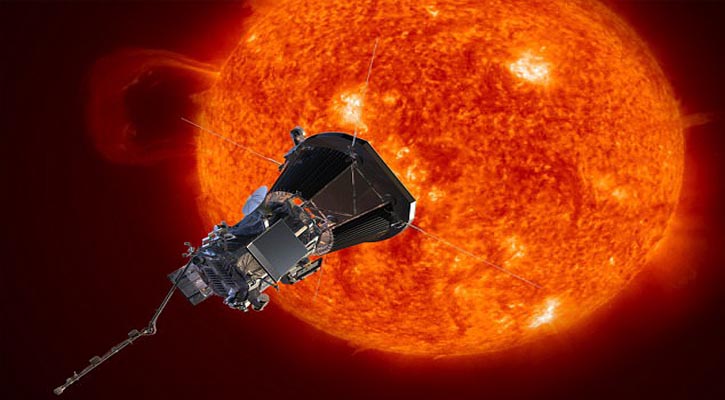NASA to send mission to fly directly into sun’s atmosphere
4 || risingbd.com

Risingbd Desk: NASA is set to announce new details on its radical mission to fly directly into the sun’s atmosphere.
The plan, dubbed Solar Probe Plus, will see a spacecraft launched from Earth in the summer of 2018, to reach an orbit within four million miles of the sun’s blazing-hot surface.
Scientists involved in the program will hold an announcement at 11 a.m. on Wednesday May 31, revealing new insight on the mission that could one day answer questions on the mechanisms behind stars and major space weather events.
Earlier this year, NASA first revealed they'd be sending a robot to the sun to help understand dangerous solar activity which could threaten humanity's existence.
The spacecraft will swoop within 4 million miles of the sun's surface next year- facing extremes in heat and radiation.
This will bring it seven times closer to the sun's surface than any spacecraft before it.
According to NASA, observations from this new vantage point will help to uncover the physics of how stars work, and could improve our ability to predict space weather.
These events have impacts on Earth, and the satellites and astronauts in space.
The announcement event will be held at the University of Chicago’s William Eckhardt Research Center Auditorium, and will be livestreamed on NASA TV.
Scientists have long wanted to send a probe through the sun's outer atmosphere, or corona, to better understand the solar wind and the material it carries into our solar system.
'This is going to be our first mission to fly to the sun,' said Eric Christian, a NASA research scientist at Goddard Space Flight Center in Greenbelt, Maryland.
'We can't get to the very surface of the sun,' but the mission will get close enough to answer three important questions, he said.
To survive its mission, the spacecraft will need to withstand temperatures outside the spacecraft of 2,500 degrees Fahrenheit (1,377 degrees Celsius).
It will be made of a 4.5 inch-thick (11.43 cm) carbon-composite shield.
Until scientists can explain what is going on up close to the sun, they will not be able to accurately predict space weather effects that cause havoc at Earth.
The latest mission could help predict a 'huge solar event', NASA says.
The sun is the source of the solar wind; a flow of gases from the sun that streams past Earth at speeds of more than a million miles per hour.
Disturbances in the solar wind shake Earth's magnetic field and pump energy into the radiation belts.
One recent study by the National Academy of Sciences estimated that without advance warning a huge solar event could cause two trillion dollars in damage in the US alone.
It could leave the eastern seaboard of the US could be without power for a year.
Millions of tons of highly magnetized material can erupt from the sun at speeds of several million miles an hour.
'This mission will provide insight on a critical link in the Sun-Earth connection. Data will be key to understanding and, perhaps, forecasting space weather', said NASA.
'Until we can explain what is going on up close to the sun, we will not be able to accurately predict space weather effects that can cause havoc at Earth.'
At its closest point, the SPP will be travelling at 450,000 miles per hour.'
Source: The Mail
Risingbd/May 27, 2017/Mukul
risingbd.com


































